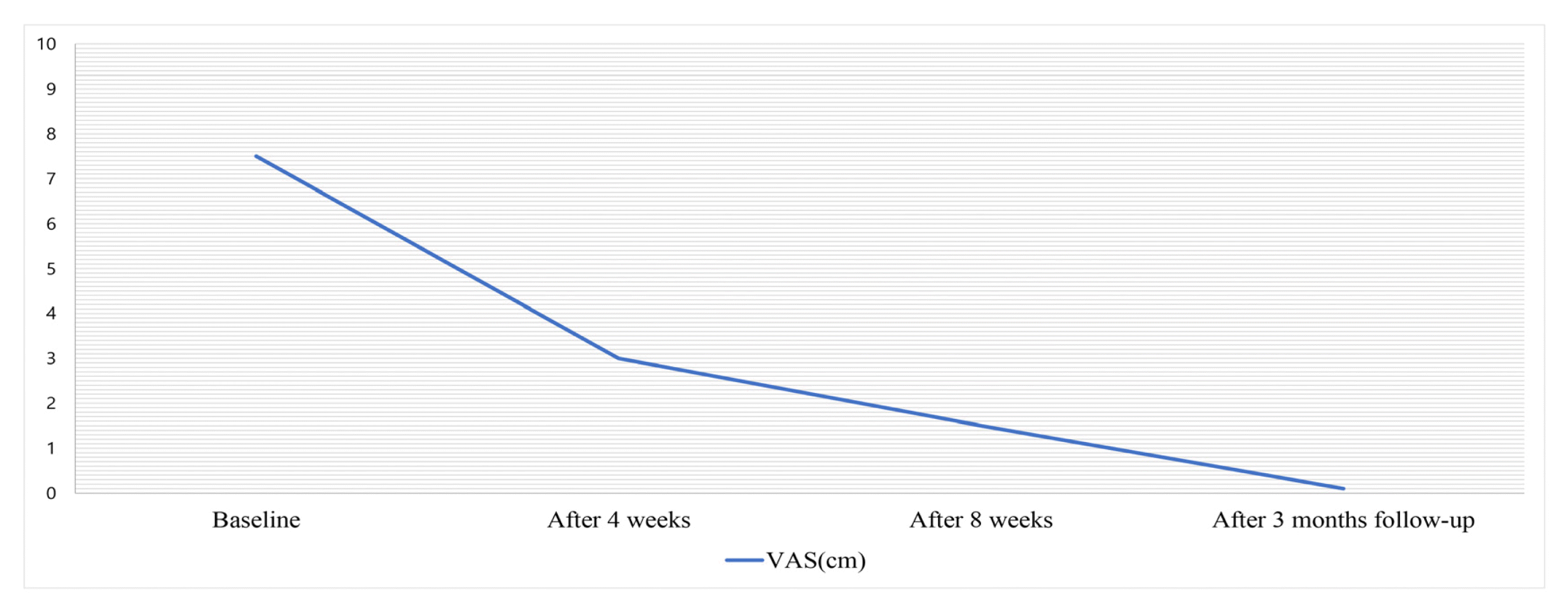References
1. Arnold M.. 2018. Headache classification committee of the International Headache Society (IHS): The international classification of headache disorders. 3rd editionth ed. Cephalalgia 38(1)p. 1–211.
10.11770333102417738202.
2. An H.K., Do J.K., Park J.Y., Han C.H., Lee D.K.. 2007;Comparisons of life quality between chronic and episodic migraine patients. Journal of the Korean Neurological Association 25(3):293–297.
3. Hovaguimian A., Roth J.. 2022;Management of chronic migraine. British medical journal 379:e067670. 10.1136/bmj-2021-067670.
4. Kwak M.J., Han Y.H., Geum J.H., Park S.H., Woo H.J., Ha W.B., Lee J.H.. 2022;Trends in domestic and international clinical research of craniosacral therapy. Scoping Review Journal of Korean Medicine Rehabilitation 32(3):13–27.
10.18325/jkmr.2022.32.3.13.
5. Arnadottir T.S., Sigurdardottir A.K.. 2013;Is craniosacral therapy effective for migraine? Tested with HIT-6 Questionnaire 19(1):11–14.
10.1016/j.ctcp.2012.09.003.
6. Haller H., Lauche R., Sundberg T., Dobos G., Cramer H.. 2020;Craniosacral therapy for chronic pain: a systematic review and meta-analysis of randomized controlled trials. BMC Musculoskeletal Disorders 21(1):1. 10.1186/s12891-019-3017-y. 1471-2474.
7. Upledger J.E., Vrendevoogd J.D.. 1983. Craniosacral therapy 3rd edth ed. Seattle: Eastland Press.
8. Blumenfeld A.M., Kaur G., Mahajan A., Shukla H., Sommer K., Tung A., Knievel K.L.. 2022;Effectiveness and safety of chronic migraine preventive treatments: A Systematic Literature Review. Pain and Therapy 12(1):251–274.
10.1007/s40122-022-00452-3.
9. Jensen M.P., Chen C., Brugger A.M.. 2003;Interpretation of visual analog scale ratings and change scores: a reanalysis of two clinical trials of postoperative pain. Journal of Pain 4(7):407–414.
10.1016/s1526-5900(03)00716-8.
10. Kosinski M., Bayliss M.S., Bjorner J.B., Ware J.E., Garber W.H., Batenhorst A., Cady R., Dahlöf C.G.H., Dowson A., Tepper S.. 2003;A six-item short-form survey for measuring headache impact: the HIT-6. Quality of life research 12(8):963–974.
10.1023/A:1026119331193.
11. Chu M.K., Im H.J., Ju Y.S., Yu K.H., Ma H.I., Kim Y.J., Kim J.Y., Lee B.C.. 2009;Validity and reliability assessment of Korean headache impact test-6 (HIT-6). Journal of the Korean Neurological Association 27(1):1–6.
12. Lipton R.B., Stewart W.F., Sawyer J., Edmeads J.G.. 2001;Clinical utility of an instrument assessing migraine disability:the Migraine Disability Assessment(MIDAS) questionnaire. Headache 41(9):854–861.
13. Khara M.S., Marianne S.R., Werner J.B., Suzanne N.C., Rose G., Gordon F.M., Arnoldas G.E., Marek J.G.. 2010;HIT-6 and MIDAS as measures of headache disability in a headache referral population. Headache 50(3):383–395.
10.1111/j.1526-4610.2009.
14. Wagner T.H., Patrick D.L., Galer B.S., Berzon R.A.. 1996;A new instrument to assess the long-term quality of life effects from migraine: development and psychometric testing of the MSQOL. Headache 36(8):484–492.
10.1046/j.1526-4610.1996.3608484.x.
15. Moon H.S., Chung C.S., Lee H.S., Park H.S., Kim S.W., Woo H.W.. 2003;The reliability and validity of the migraine-specific quality of life questionnaire for Korean migraine suffers. Journal of the Korean Neurological Association 21(2):146–155.
16. Moon H.S.. 2018;Comprehensive review and update on chronic migraine. Journal of Korean American Medical Association 61(5):314–322.
10.5124/jkma.2018.61.5.314.
17. Ishii R., Schwedt T.J., Dumkrieger G., Lalvani N., Craven A., Goadsby P.J., Lipton R.B., Olesen J., Silberstein S.D., Burish M.J., Dodick D.W.. 2021;Chronic versus episodic migraine: The 15-day threshold does not adequately reflect substantial differences in disability across the full spectrum of headache frequency. Headache 61(7):992–1003.
10.1111/head.14154.
18. Sauro K.M., Rose M.S., Becker W.J., Christie S.N., Giammarco R., Mackie G.F., Eloff A.G., Gawel M.J.. 2010;HIT-6 and MIDAS as measures of headache disability in a headache referral population. Headache 50(3):383–395.
10.1111/j.1526-4610.2009.01544.x.
19. Zhang N., Houle T., Hindiyeh N., Aurora S.K.. 2020;Systematic review: acupuncture vs standard pharmacological therapy for migraine prevention. Headache 60(2):309–317.
10.1111/head.13723.
20. Lee S.J., Lee S.H., Heo I., Hwang E.H., Lim H.H., Song Y.K.. 2020;Chuna craniosacral therapy for headache: a systematic review and meta analysis. The Journal of Korea CHUNA Manual Medicine for Spine & Nerves 15(1):35–48.
10.30581/jkcmm.2020.15.1.35.





